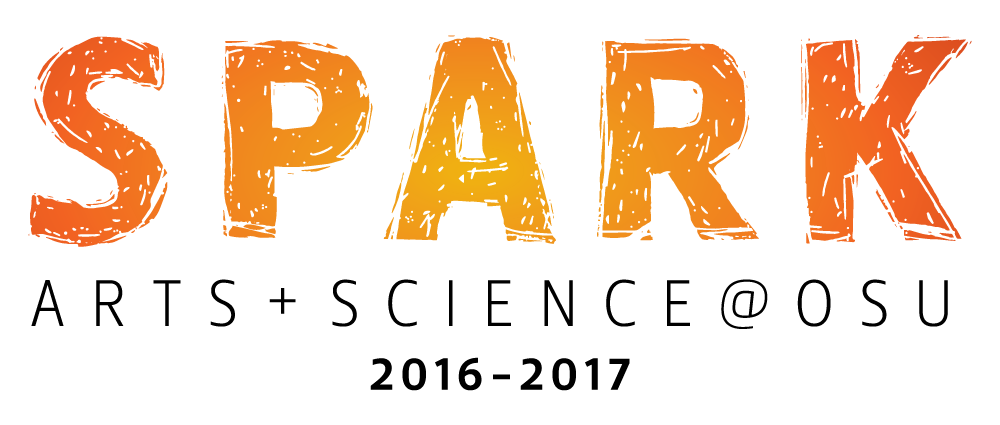
Innovation in the arts and science lies in the wonder, creativity, and hard work of people. We’d like to share some of the OSU stories of arts+science here.
Madelaine Corbin had been curious about color for a long time. A visual artist and art major, she always considered its application in an artistic context, but wondered what really makes something a color. Is it inherent in an object? Is it in the eye of the perceiver? Is it based on chemical structure?
A guest lecture in one of her art classes by OSU materials science professor Mas Subramanian deepened her interest. The lecture was on the chemical nature of pigments, and she knew she wanted to find out more.
“After studying so many unanswerable questions and concepts in art, learning about the answer to this question through science was intriguing to me,” she says.
Alumna Sarah McKenney blends the artistic and technical in her job as a lighting technician at the Oregon Shakespeare Festival. For McKenney, OSF is where her creativity and her love of math, science and technology can come together. “In school I never thought math applied to me. Here, it’s super super interesting to learn how things like computer chips work to make candles flicker onstage,” McKenney says. “It’s instant gratification, in the weirdest way possible. It’s the puzzle that creates something beautiful and interesting in the end.”
"The sciences and the arts are the disciplinary equivalents of the two heroes in a buddy cop film. Early in their relationship, they are puzzled and often frustrated by the strange behaviors, attitudes, and worldviews of each other. The even-tempered veteran of the local force, science, places its faith in realism—a sense that the external world is predictable, and, with patience, increasingly knowable. The hot-headed new transfer from the city, the arts, is less concerned with how the world is than how it is perceived by the diverse people who live and have lived within it.
Gradually and with many comic interludes, they put aside their differences and learn to work together: facts begin to interact with values, modern discoveries are reframed through historical narratives, and understanding and imagination slap each other on the back. We don’t yet know if they will be able to solve the difficult cases of the 21st century, but we are rooting for them as our best hope to do so."
"Science and art are both creative processes that require imagination and problem solving. I have dabbled in both for as long as I can remember and this has provided balance in my life. Working in glass, I use a variety of techniques to create imagery that describe a place or subject. Similarly, in research we use different approaches to answer a question. Both result in a collage of images or data, and how these are pieced together affects the aesthetics of the art and the accuracy of the scientific conclusions.
I am drawn to the puzzle-solving aspects of science and art, and when scientific puzzles take a long time to answer, I have found it very satisfying to go into the studio and create something."
An unlikely experience inspired Andrew Su (’16) to pursue a career in medicine — working door-to-door on state representative Knute Buehler’s 2014 campaign. Although campaigning did not move history major Su toward a career in politics, it showed him that a trajectory from the liberal arts to medicine was possible, and what kind of a difference Buehler, a surgeon, made in people’s lives.
“His journey from the liberal arts to becoming a doctor ignited the idea in me – I hadn’t even thought of the connection,” Su says of Buehler, who studied history at Oregon State, as well as politics and government at Oxford before heading to Johns Hopkins for medical school. “When I campaigned door-to-door with Dr. Buehler, we would run into patients all the time. ‘You have changed the course of my life,’ ‘Because of you I can walk again,’ they told him. He was making a direct, sizable contribution to people’s lives.”